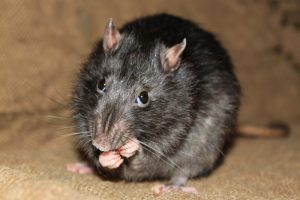Rats are flexible, agile critters — and they can squeeze into your attic in a lot of creative ways. You might not visibly spot them running throughout your home, but what you can’t see can still cause a lot of trouble. 
5 Clues That You’ve Got Rats in the Attic
If you notice any of these signs, you might have a rat infestation in the attic.
-
Droppings
Rat droppings tend to pile up near food and water sources, as well as holes or cracks in the walls.
-
Nibble marks
You might find gnaw marks on boxes, wires, wood panels, corners, and other objects around your home.
-
Squeaks, scampering or scratching
They’re mostly nocturnal, but you can still hear rats running around in the daytime too.
-
Pools of urine
Puddles or stains from rat urine don’t just smell bad in the short term; they make walls, floors, and ceilings stink for weeks or possibly even months.
-
Nests
Rat nests are typically found in warm places like cabinets, closets, walls, and computer cases.
Don’t Take a Chance With These Dangers
Regardless of where they are in your home, rats pose a pretty serious threat. Here are some of the dangers that rats can bring to your property.
-
Diseases and other health risks
Disease can spread from rats to humans through contamination of food, air filtration, and living spaces.
-
Biting and scratching
Aside from the discomfort that comes from an animal bite, rat bites are dangerous because they’re a direct way to catch a disease.
-
Fleas and mites
Rats will carry many other pests into your home, like fleas, mites, lice, and even ticks.
-
Structural damage
Since rats have teeth that never stop growing, they’re amazing at gnawing through any material, like wood and wire.
Pest Professionals, You Can Count On
The fully licensed technicians at Critter Control® of Orlando will remove pests from your attic and make it virtually impossible for them to get back inside. As a family operated business, we know how important it is to keep pests out and provide excellent customer service, which is why we only use humane, eco-friendly alternatives to tackle infestations.





